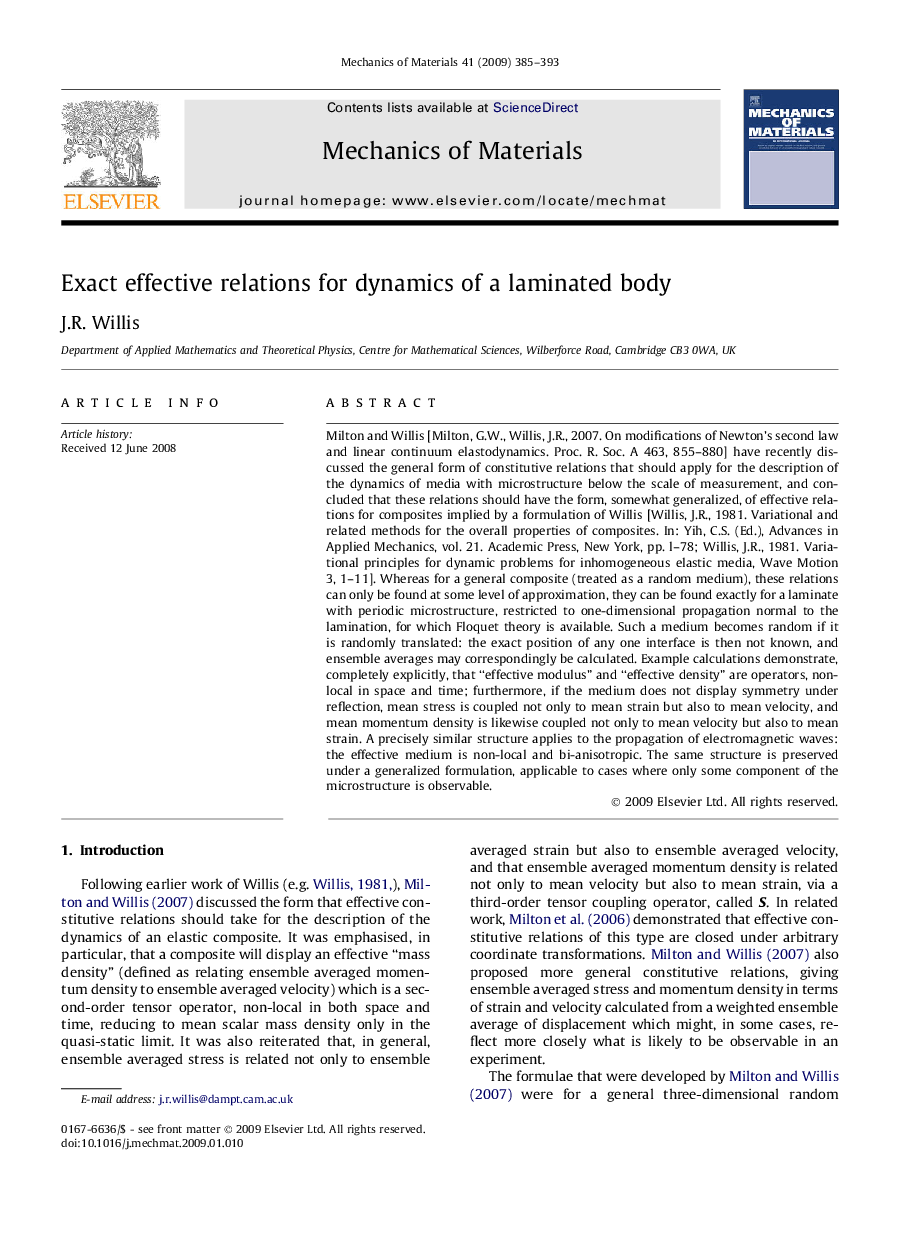| Article ID | Journal | Published Year | Pages | File Type |
|---|---|---|---|---|
| 800520 | Mechanics of Materials | 2009 | 9 Pages |
Milton and Willis [Milton, G.W., Willis, J.R., 2007. On modifications of Newton’s second law and linear continuum elastodynamics. Proc. R. Soc. A 463, 855–880] have recently discussed the general form of constitutive relations that should apply for the description of the dynamics of media with microstructure below the scale of measurement, and concluded that these relations should have the form, somewhat generalized, of effective relations for composites implied by a formulation of Willis [Willis, J.R., 1981. Variational and related methods for the overall properties of composites. In: Yih, C.S. (Ed.), Advances in Applied Mechanics, vol. 21. Academic Press, New York, pp. l–78; Willis, J.R., 1981. Variational principles for dynamic problems for inhomogeneous elastic media, Wave Motion 3, 1–11]. Whereas for a general composite (treated as a random medium), these relations can only be found at some level of approximation, they can be found exactly for a laminate with periodic microstructure, restricted to one-dimensional propagation normal to the lamination, for which Floquet theory is available. Such a medium becomes random if it is randomly translated: the exact position of any one interface is then not known, and ensemble averages may correspondingly be calculated. Example calculations demonstrate, completely explicitly, that “effective modulus” and “effective density” are operators, non-local in space and time; furthermore, if the medium does not display symmetry under reflection, mean stress is coupled not only to mean strain but also to mean velocity, and mean momentum density is likewise coupled not only to mean velocity but also to mean strain. A precisely similar structure applies to the propagation of electromagnetic waves: the effective medium is non-local and bi-anisotropic. The same structure is preserved under a generalized formulation, applicable to cases where only some component of the microstructure is observable.
